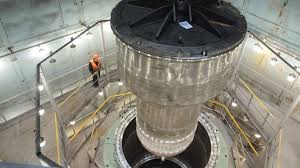
Breaking News
 "I've Always Gotten Along with President Putin" | Trump's TED Talk on War and Frie
"I've Always Gotten Along with President Putin" | Trump's TED Talk on War and Frie
 The court is calling: How pickleball is rewiring brains, one volley at a time
The court is calling: How pickleball is rewiring brains, one volley at a time
 SpaceX aims to launch Starship Flight 10 test flight on Aug. 24
SpaceX aims to launch Starship Flight 10 test flight on Aug. 24
 What is Peter Thiel's Role In The Technocratic Takeover Of Washington?
What is Peter Thiel's Role In The Technocratic Takeover Of Washington?
Top Tech News
 Chinese Scientists Produce 'Impossible' Steel to Line Nuclear Fusion Reactors in Major Break
Chinese Scientists Produce 'Impossible' Steel to Line Nuclear Fusion Reactors in Major Break
 1,000 miles: EV range world record demolished ... by a pickup truck
1,000 miles: EV range world record demolished ... by a pickup truck
 Fermented Stevia Extract Kills Pancreatic Cancer Cells In Lab Tests
Fermented Stevia Extract Kills Pancreatic Cancer Cells In Lab Tests
 3D printing set to slash nuclear plant build times & costs
3D printing set to slash nuclear plant build times & costs
 You can design the wheels for NASA's next moon vehicle with the 'Rock and Roll Challenge
You can design the wheels for NASA's next moon vehicle with the 'Rock and Roll Challenge
 'Robot skin' beats human reflexes, transforms grip with fabric-powered touch
'Robot skin' beats human reflexes, transforms grip with fabric-powered touch
 World's first nuclear fusion plant being built in US to power Microsoft data centers
World's first nuclear fusion plant being built in US to power Microsoft data centers
 The mitochondria are more than just the "powerhouse of the cell" – they initiate immune...
The mitochondria are more than just the "powerhouse of the cell" – they initiate immune...
 Historic Aviation Engine Advance to Unlock Hypersonic Mach 10 Planes
Historic Aviation Engine Advance to Unlock Hypersonic Mach 10 Planes
 OpenAI CEO Sam Altman Pitches Eyeball-Scanning World ID to Bankers
OpenAI CEO Sam Altman Pitches Eyeball-Scanning World ID to Bankers
Russia Will Test a New Sodium Fast Reactor and Reprocessing to Handle All Nuclear Waste

It will be a multi-loop research reactor capable of testing lead, lead-bismuth and gas coolants, and running on MOX (mixed uranium and plutonium oxide) fuel.
NIIAR intends to set up on-site closed fuel cycle facilities for the MBIR, using
pyrochemical reprocessing it has developed at pilot scale
. This reprocessing could eliminate most nuclear waste and enable reuse as fuel.
They can close the fuel cycle with the reactor and new pyroprocessing. Closing the fuel cycle means all of the waste is converted back into usable fuel.
AEM-Technology started the manufacture of the reactor pressure vessel for MBIR in March, 2017 and has said that construction of the demonstration reactor should be completed by 2020. The project is expected to cost 16.4 billion rubles ($454 million). The MBIR will be the most powerful research reactor in the world.



